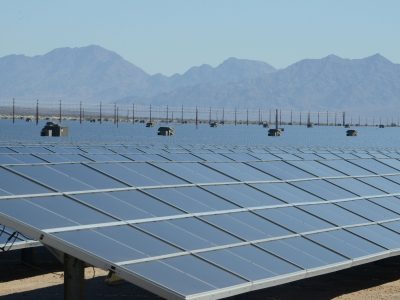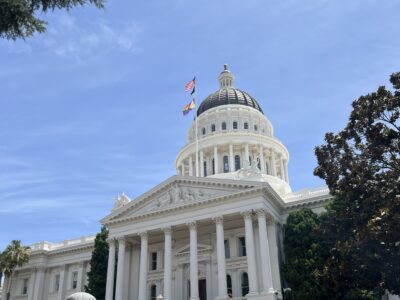The Big Chill
What went wrong in Texas and what can we learn from it?
The rolling blackouts in Texas were national news. Texas calls itself the energy capital of the United States, yet it couldn’t keep the lights on. Conservatives were quick to blame reliance on wind power, just as they did last summer when California faced power interruptions due to a heat wave. What really happened?
It’s true that there was some loss of wind power in Texas due to icing on turbine blades. Unlike their counterparts further north, Texas wind operators weren’t prepared for severe weather conditions. But this was a relatively minor part of the problem. The much bigger problem was loss of power from gas-fired power plants and a nuclear plant. The drop of gas generation has been attributed to freezing pipelines, diversion of gas for residential heating, and equipment malfunctioning.
Texas faced a wave of very unusual cold weather, just as California faced an unusual heatwave last summer. What’s notable, however, is that in other ways the two systems are quite different. Texas has perhaps the most thoroughly deregulated electricity system in the country. California experimented with its own deregulation, abandoned much of the effort after a crisis, and now has a kind of hybrid system. California and Texas are in opposing camps on climate policy. Yet both states got into similar trouble.
What happened in these states points to three pervasive problems. The first is that we haven’t solved the problem of ensuring that the electricity system has the right amount of generating capacity. In states with traditional rate regulation, utilities have an incentive to overbuild capacity because they’re guaranteed a profit on their investments. Since there’s no competition, they have no incentive to innovate either; instead, they have an incentive to keep old power plants going too long, contributing to air pollution and carbon emissions. In other states, where utilities generally buy their power on the market, the income from power sales is based on short-term power needs and doesn’t necessarily provide enough incentive for long-term investments. That could be part of the problem in both California and Texas. Some regional grid operators have established what are called capacity markets. At least judging from its record in the largest region (PJM), this has resulted in excess capacity and has encouraged inefficient aging generators to stay in the market. In short, we’ve got too little generation or too much, but we haven’t found the Goldilocks point of “just right.”
The second problem is that we haven’t made the power system resilient enough. The heatwave that interfered with the California grid has been linked to climate change. It’s not clear whether the exceptionally cold weather in Texas was also linked to climate change, although climate change does seem to be disrupting the polar vortex that can contribute to severe winter conditions. In Texas, the weather didn’t just impact the electrical system: the natural gas system suffered from frozen pipes, reducing gas supply to power generators. Climate change is throwing more and more severe weather events at energy systems from Puerto Rico to California, yet our planning has not come to grips with the need to adapt to these risks. Microgrids, increased energy storage, and improved demand response may furnish part of the answer.
The third problem relates to the transmission system. Among the causes of the California blackouts, a key transmission line to the Pacific Northwest was down for weather-related reasons. This is another example of the broad failure to make the grid resilient enough for an era of climate change. Texas has deliberately shackled itself by cutting itself off from the national power grid in order avoid federal regulation. This leaves it unable to draw on outside resources in times of crisis. This is all part of a much larger problem: the US badly needs additional transmission, but political barriers have stymied expansion of the transmission system.
The term “wake up call” is over used but seems applicable here. If we don’t wake up to the need for a climate-resilient power system, we will face even bigger trouble ahead.
Reader Comments
3 Replies to “The Big Chill”
Comments are closed.







Much good thinking and clear writing here, but:
– It appears Texas would have had enough capacity had it been maintained/operated to work in a cold snap. Overbuilding inoperable capacity doesn’t help.
– Quite a lot of outage seems to have come from down distribution wires. Only onsite generation, resiliently hooked up to work with or without the grid, solves that (or EU-style undergrounding).
– Like virtually all writing on this topic, the essay omits the demand side. Inefficient buildings contributed at least as much to this crisis as inadequate operable supply. CA improves efficiency by rules. TX may prefer to compete efficiency resources against supply resources, but with some exceptions (such as the Austin muni) does little to exploit its immense efficiency resource. Demand response is another huge underexploited resource, apparently in both states.
Some good thinking here, but it’s important to compare the magnitude of the California and Texas outages.
In California, about 500 MW of load was curtailed for less than an hour.
In Texas, 13,000 MW of load was curtailed for three days.
In terms of lost energy, the Texas problems are about 100 times as serious as the California problem was.
Yes, there are lessons for both to learn.
Perhaps most important, for both, is that smart thermostats, that can be controlled remotely, could probably have prevented the California problem entirely, and reduced the Texas problem to a fraction of its severity. It is impossible to adjust the supply side of the equation quickly, but the demand side can be adjusted up or down almost instantly, if the proper controls are in place.
Did the Texas Legislature, ie, the Texas energy industry, sufficiently capitalize and invest in Grid maintenance to ensure that it was robust and resilient? Or did they clearly decide to underinvest in Grid maintenance, effectively starving O&M, eg, to maximize investment returns, knowing that if the Grid broke down, the ‘pesky’ federal regulators they routinely disdain, would come to their rescue and save their bacon with emergency federal funds, supplies and services?